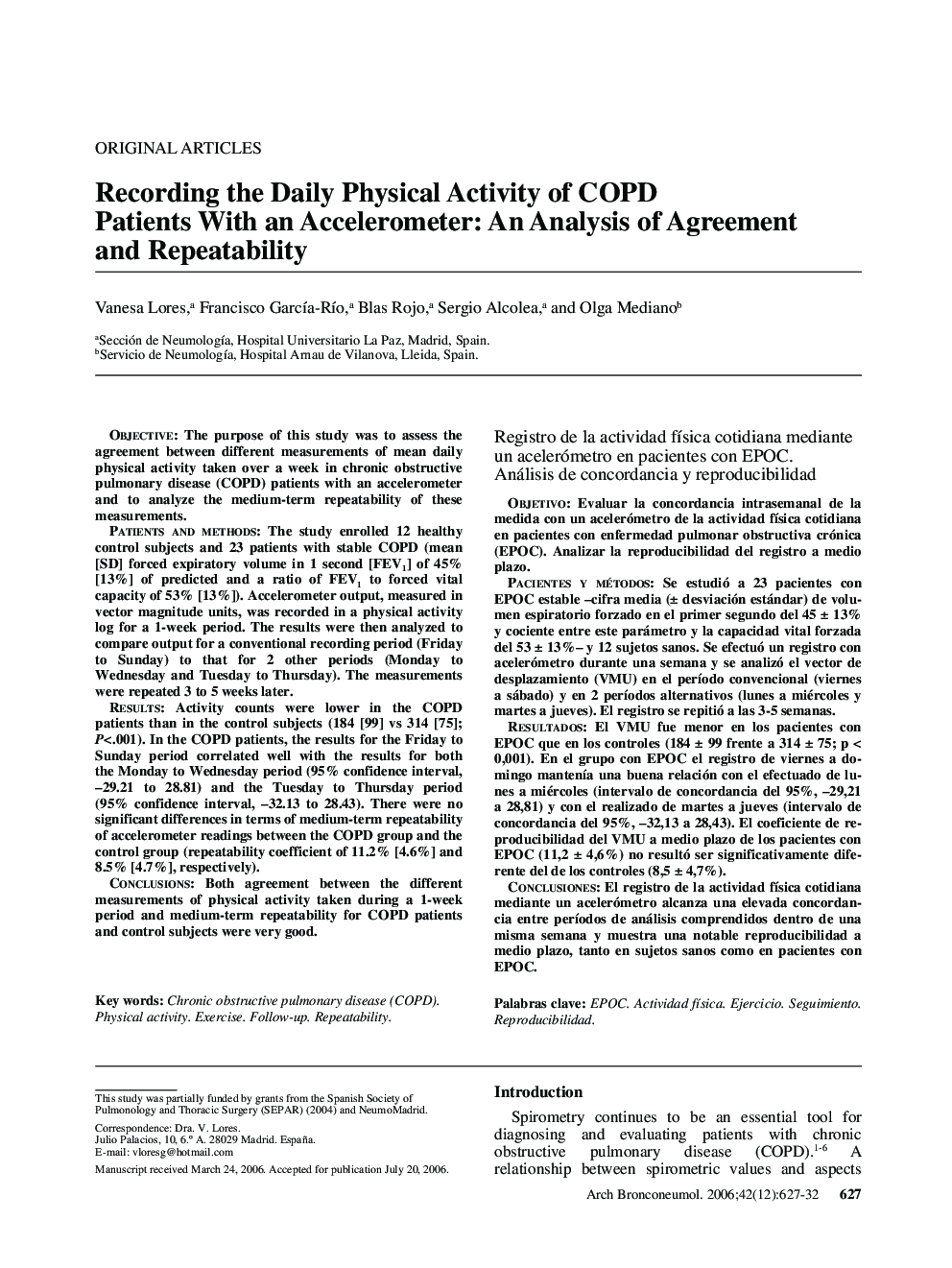| Article ID | Journal | Published Year | Pages | File Type |
|---|---|---|---|---|
| 4206935 | Archivos de Bronconeumología (English Edition) | 2006 | 6 Pages |
ObjectiveThe purpose of this study was to assess the agreement between different measurements of mean daily physical activity taken over a week in chronic obstructive pulmonary disease (COPD) patients with an accelerometer and to analyze the medium-term repeatability of these measurements.Patients and methodsThe study enrolled 12 healthy control subjects and 23 patients with stable COPD (mean [SD] forced expiratory volume in 1 second [FEV1] of 45% [13%] of predicted and a ratio of FEV1 to forced vital capacity of 53% [13%]). Accelerometer output, measured in vector magnitude units, was recorded in a physical activity log for a 1-week period. The results were then analyzed to compare output for a conventional recording period (Friday to Sunday) to that for 2 other periods (Monday to Wednesday and Tuesday to Thursday). The measurements were repeated 3 to 5 weeks later.ResultsActivity counts were lower in the COPD patients than in the control subjects (184 [99] vs 314 [75]; P<.001). In the COPD patients, the results for the Friday to Sunday period correlated well with the results for both the Monday to Wednesday period (95% confidence interval, −29.21 to 28.81) and the Tuesday to Thursday period (95% confidence interval, −32.13 to 28.43). There were no significant differences in terms of medium-term repeatability of accelerometer readings between the COPD group and the control group (repeatability coefficient of 11.2% [4.6%] and 8.5% [4.7%], respectively).ConclusionsBoth agreement between the different measurements of physical activity taken during a 1-week period and medium-term repeatability for COPD patients and control subjects were very good.
ObjetivoEvaluar la concordancia intrasemanal de la medida con un acelerómetro de la actividad física cotidiana en pacientes con enfermedad pulmonar obstructiva crónica (EPOC). Analizar la reproducibilidad del registro a medio plazo.Pacientes y métodosSe estudió a 23 pacientes con EPOC estable -cifra media (± desviación estándar) de volu-men espiratorio forzado en el primer segundo del 45 ± 13% y cociente entre este parámetro y la capacidad vital forzada del 53 ± 13%- y 12 sujetos sanos. Se efectuó un registro con acelerómetro durante una semana y se analizó el vector de desplazamiento (VMU) en el período convencional (viernes a sábado) y en 2 períodos alternativos (lunes a miércoles y martes a jueves). El registro se repitió a las 3-5 semanas.ResultadosEl VMU fue menor en los pacientes con EPOC que en los controles (184 ± 99 frente a 314 ± 75; p < 0,001). En el grupo con EPOC el registro de viernes a do-mingo mantenía una buena relación con el efectuado de lunes a miércoles (intervalo de concordancia del 95%, −29,21 a 28,81) y con el realizado de martes a jueves (intervalo de concordancia del 95%, −32,13 a 28,43). El coeficiente de reproducibilidad del VMU a medio plazo de los pacientes con EPOC (11,2 ± 4,6%) no resultó ser significativamente dife-rente del de los controles (8,5 ± 4,7%).ConclusionesEl registro de la actividad física cotidiana mediante un acelerómetro alcanza una elevada concordancia entre períodos de análisis comprendidos dentro de una misma semana y muestra una notable reproducibilidad a medio plazo, tanto en sujetos sanos como en pacientes con EPOC.
